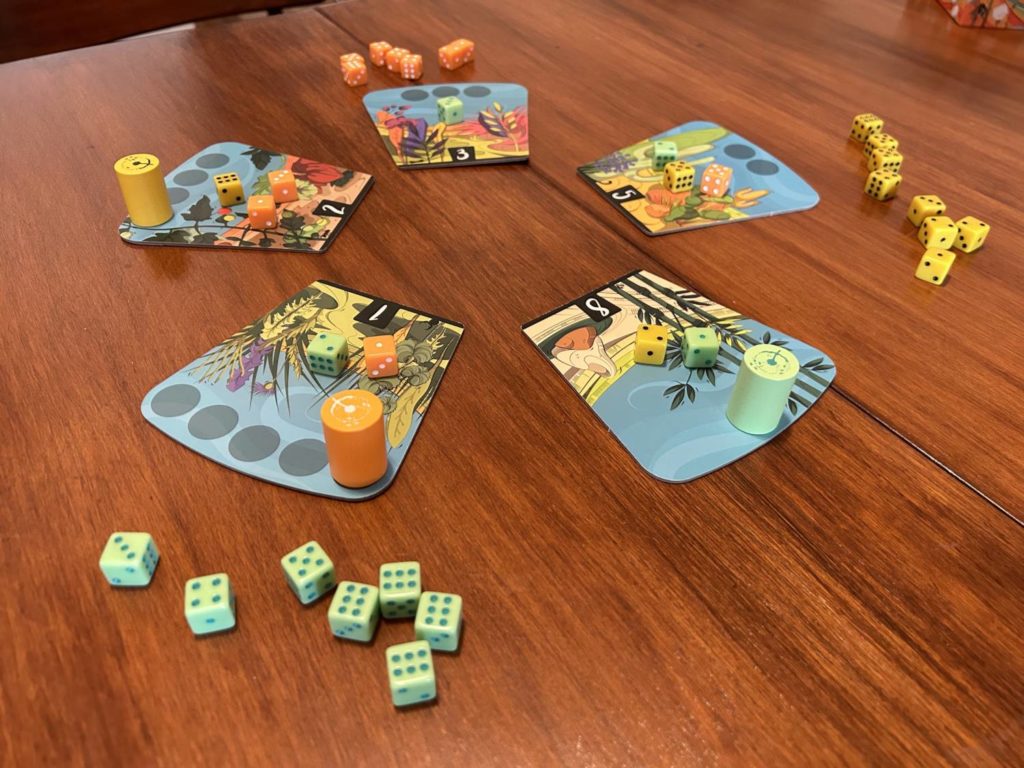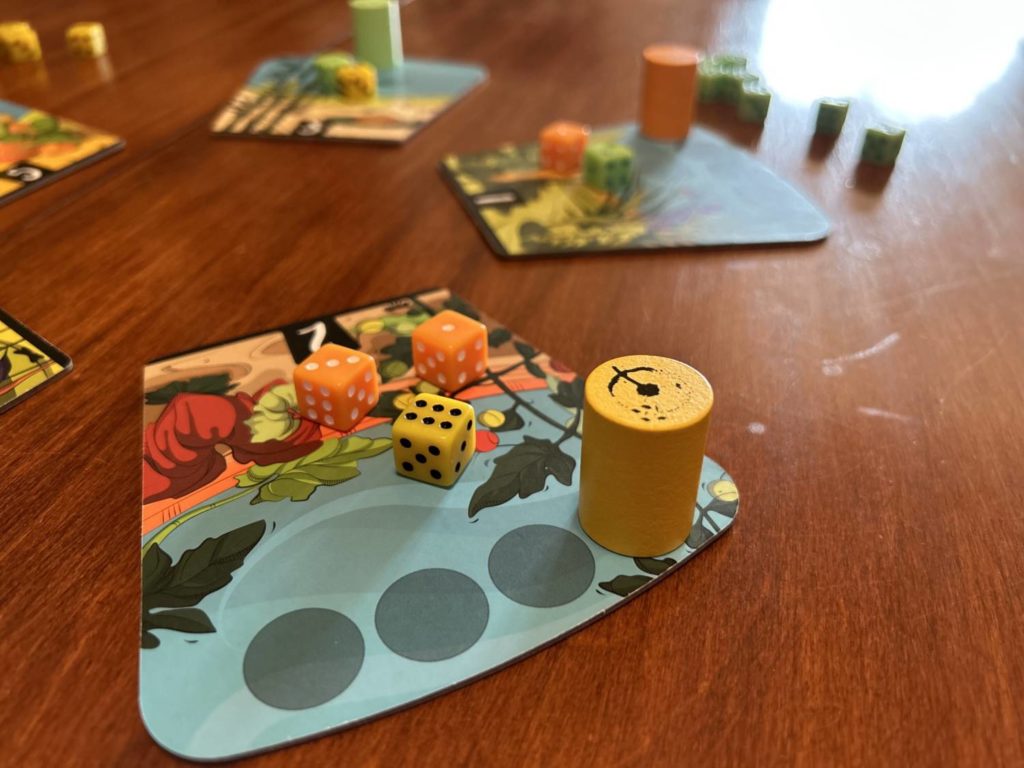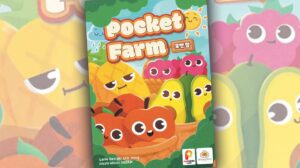Disclosure: Meeple Mountain received a free copy of this product in exchange for an honest, unbiased review. This review is not intended to be an endorsement.
Picture a dandelion head covered in seeds. You decide the setting. Maybe you’re in a park, or by a brook, maybe you’re in the middle of a field all by yourself. No matter where you are, it’s a beautiful day. Warm without being hot. Sunny without being oppressive. Slowly exhale as the dandelion seeds break off, floating away on the breeze. Follow them as they bob and weave, as they stay suspended for longer than should be possible. Keep taking deep breaths and letting them out. Once the seeds start to land, open your eyes.
That is how it feels to play Dandelions.
 Picked You Out and Picked You Up
Picked You Out and Picked You Up
Dandelions is a little game in a little box from designer Takashi Sakaue and publisher Allplay (née BoardGameTables.com). The first thing that strikes you about it is the unusual color palette. Artists Daniel Profiri and Anca Gavril opted for less-commonly seen shades of blue, orange, red, and green. If the blue weren’t so dominant, that big open sky, you might describe the box as autumnal.
You then get to experience a pleasant jolt as you open the box and realize the color palette carries all the way through the components. The dice and player tokens are yellow, orange, and green, the latter best described as mint.
You lay out the five boards in a circle, covered in drawings of the various plants in this field or garden. There are two needles this game manages to thread, and the first is that the production is somehow both muted and vibrant.
Each player rolls all eleven of their dice. Your turn consists of choosing one die, moving your wooden cylinder that number of spaces, and placing the die on the garden tile where you ended up. If you would land on an occupied space, you bounce and move the same number of spaces again. If there are dice from other players on the tile where you land, you check to see if any of them bear the same number as the die you just placed. If they do, you move them either forwards or backwards a tile.
 All the while as you do this, you’re carrying on a friendly conversation about something entirely unrelated to the game. Until suddenly you aren’t, and you find yourself absorbed.
All the while as you do this, you’re carrying on a friendly conversation about something entirely unrelated to the game. Until suddenly you aren’t, and you find yourself absorbed.
Once all three players—the game is for 2-3 players, but it is significantly better at three—have placed all eleven of their dice, you score. Dandelions includes a dry-erase scoreboard, which makes the process pretty easy. Each garden tile is worth a specified number of points, and each player gets that number of points per die on the tile. Then, the player with the most dice on each tile will score the number of pips on their dice. If there’s a tie, the player with fewer pips gets to score.
 A Million Little Wishes Float Across the Sky
A Million Little Wishes Float Across the Sky
The second needle that Dandelions manages to thread perfectly, the much more difficult of the two, is being simultaneously relaxing, undemanding, and rewarding. You can make good plays in Dandelions. You can plan ahead, to some extent. You can see what dice your opponents have left and choose different moves as a result. You can block. You can inconvenience. You can take advantage of opportunities that present themselves.
It’s pleasant. It’s interactive. It’s short. Is it going to change your life? No. Is it leaving my collection any time in the foreseeable future? No.
Dandelions.
Terrific.





 Picked You Out and Picked You Up
Picked You Out and Picked You Up A Million Little Wishes Float Across the Sky
A Million Little Wishes Float Across the Sky







Add Comment